These Moques not only provide the devotees spiritual satisfaction but are also masterpiece the Muslim architecture
Mosque is a Holy place for Muslims. It refers to its Arabic name – Masjid. A Mosque is a place for worship for all the followers of Islam. Masjid is considered as Allah ka Gahr means no one is owner of Masjid except Allah (There are strict and detailed requirements in Sunni fiqh for a place of worship to be considered a Masjid, with places that do not meet these requirements regarded as musallas.) Quba Mosque is the first mosque in Islamic history and mosques have developed significantly since Quba mosque. Many mosques have elaborate domes, minarets, and prayer halls. Mosques all around the world are well known for the general importance to Muslims as well as for Islamic architecture and representation of Islamic culture. Although Mosque is the place where all the Muslims of the community come together and have their prayers, Mosque can also be the place of beautiful architecture that is famous all around the world.
1.Masjid al Haram (The Holy Mosque) – Saudi Arabia

Al-Masjid al-Ḥarām (المسجد الحرام ) or the Grand Mosque surrounds Islam's holiest place, the Kaaba Shareef. It is located in the city of Mecca and is the largest mosque in the world. Muslims around the world turn toward Kaaba while performing any prayer. The current structure covers an area of 356,800 square meters including the outdoor and indoor praying spaces and can accommodate up to 4 millions worshipers during the Hajj period, one of the largest annual gatherings of people in the world. In 2007, the Masjid went under a extension project which is estimated to last until 2020. King Abdullah bin Abdul-Aziz plans to increase the Masjid's capacity to 2 million with two new minarets, bringing their total to 11 minarets. The cost of the project is 10.6-billion Us Dollers and after completion the mosque will house over 2.5 million worshipers. The mataf (the circumambulation areas around the Kaaba) will also see expansion and all closed spaces will be airconditioned.
2.Masjid Nabawi – Saudi Arabia

Al Masjid al Nabawi "Mosque of the Prophet" is a mosque built by the our Prophet Muhammad (s.a.w.s) Al Masjid al Nabawi situated in the city of Medina e munwwara. It is the second holiest site in Islam. It was the second mosque built in history and is now one of the largest mosques in the world. The site was originally adjacent to Prophet Muhammad (s.a.w.s)'s house; he settled there after his Hijra (emigration) to Medina in 622. He shared in the heavy work of construction with has Sahabas. The original mosque was an open-air building. The basic plan of the building has been adopted in the building of other mosques throughout the world. The mosque also served as a community center, a court, and a religious school for the Muslims In 1909, it became the first place in the Arabian Peninsula to be provided with electrical lights. One of the most notable features of the site is the a beautiful , and vary attrictive Green Dome (گنبد) over the center of the mosque, originally (amman)Aisha's house where the tomb of Muhammad (s.a.w.s) is located. In 1279 AD, a wooden cupola was built over the tomb which was later rebuilt and renovated multiple times in late 15th century and once in 1817. The dome was first painted green in 1837, and later became known as the Green Dome.
3. Al-Aqsa Mosque (plestine)

Al-Masjid al-Aqsa, is also known as Al-Aqsa and Bayt al-Muqaddas, is the third holiest site in Islam and is located in the Old City of Jerusalem. The site on which the silver domed mosque sits, along with the Dome of the Rock, also referred to as al-Haram ash-Sharif or "Noble Sanctuary," is the Temple Mount, the holiest site in Judaism, the place where the Temple is generally accepted to have stood. Muslims believe that Muhammad was transported from the Sacred Mosque in Mecca to al-Aqsa during the Night Journey. Islamic tradition holds that Muhammad led prayers towards this site until the seventeenth month after the emigration, when God directed him to turn towards the Ka'aba. The mosque was originally a small prayer house built by the Rashidun caliph Umar, but was rebuilt and expanded by the Umayyad caliph Abd al-Malik and finished by his son al-Walid in 705 CE. After an earthquake in 746, the mosque was completely destroyed and rebuilt by the Abbasid caliph al-Mansur in 754, and again rebuilt by his successor al-Mahdi in 780. Another earthquake destroyed most of al-Aqsa in 1033, but two years later the Fatimid Caliph Ali az-Zahir built another mosque which has stood to the present-day. During the periodic renovations undertaken, the various ruling dynasties of the Islamic Caliphate constructed additions to the mosque and its precincts, such as its dome, facade, its minbar, minarets and the interior structure. When the Crusaders captured Jerusalem in 1099, they used the mosque as a palace and church, but its function as a mosque was restored after its recapture by Saladin in 1187. More renovations, repairs and additions were undertaken in the later centuries by the Ayyubids, Mamluks, Ottomans, the Supreme Muslim Council, and Jordan. Today, the Old City is under Israeli control, but the mosque remains under the administration of the Palestinian-led Islamic waqf. The al-Aqsa Mosque is located on the Temple Mount, referred to by Muslims today as the "Haram al-Sharif" ("The Noble Sanctuary"), an enclosure expanded by King Herod the Great beginning in 20 BCE. The mosque resides on an artificial platform that is supported by arches constructed by Herod's engineers to overcome the difficult topographic conditions resulting from the southward expansion of the enclosure into the Tyropoeon and Kidron valleys. At the time of the Second Temple, the present site of the mosque was occupied by the Royal Stoa, a basilica running the southern wall of the enclosure. The Royal Stoa was destroyed along with the Temple during the sacking of Jerusalem by the Romans in 70 CE. Emperor Justinian built a Christian church on the site in the 530s which was consecrated to the Virgin Mary and named "Church of Our Lady." The church was later destroyed by Khosrau II, the Sassanid emperor, in the early 7th century and left in ruins. The rectangular al-Aqsa Mosque and its precincts are 144,000 square metres (1,550,000 sq ft), although the mosque itself is about 35,000 square metres (380,000 sq ft) and could hold up to 5,000 worshippers. It is 272 feet (83 m) long, 184 feet (56 m) wide dome
4. Faisal Masjid (Pakistan)

It is the largest mosque in South Asia and one of the largest mosques in the world, located in the Islamabad capital city of pakistan. In 1969, an international competition was held in which architects from 17 countries submitted 43 proposals. The mosque was designed by Turkish architect Vedat Dalokay (who won the Aga Khan Award for Architecture with this project) to be shaped like a desert Bedouin's tent. The mosque's architecture is modern and unique, lacking both the traditional domes and arches of most other mosques around the world. The shape of the Faisal Mosque is an eight-sided concrete shell inspired by a desert Beduoin's tent and the cubic Kaaba in Mecca, flanked by four unusual minarets inspired by Turkish architecture Completed in 1986. It is situated at the North end of the City and at the Foot of Margalla Hills, the Westernmost Foothills of the Himalayas. It is located on an elevated area of land against a picturesque backdrop of the Margalla Hills. This enviable location represents the mosque's great importance and allows it to be seen from miles around day and night. The Faisal Mosque is conceived as the National Mosque of Pakistan and named after the late King Faisal bin Abdul-Aziz of Saudi Arabia, who supported and financed the project. The Faisal Mosque was the largest mosque in the world from 1986 until 1993, when it was overtaken in size upon the completion of the Hassan II Mosque in, Morocco. Subsequent expansions of the Masjid al-Haram and Masjid al-Nabawi Saudi Arabia during the 1990s relegated Faisal Mosque to fourth place in terms of size.
5. Sultan Omar Ali Saifuddien Mosque (Brunei)
is a royal Islamic mosque located in Bandar Seri Begawan, the capital of the Sultanate of Brunei. The mosque considered one of the most beautiful mosques in the Asia Pacific and a major landmark and tourist attraction of Brunei. The mosque unites Mughal architecture and Italian styles. The plans were done by Booty and Edwards Chartered Architects according to designs by the Italian architect Cavaliere Rudolfo Nolli. The mosque as a symbol of the Islamic faith in Brunei dominates the skyline of Bandar Seri Begawan. The building was completed in 1958 and is an example of modern Islamic architecture. The mosque's most recognizable feature, the main dome, is covered in pure gold. The mosque stands 171 feets high and can be seen from virtually anywhere in Bandar Seri Begawan. The main minaret is the mosque's tallest feature.
6. The Sultan Ahmed Mosque (Turky .Istanbul)

The Sultan Ahmed Mosque is an historical mosque in Istanbul. The mosque is popularly known as the Blue Mosque for the blue tiles adorning the walls of its interior. It was built from 1609 to 1616. Like many other mosques. While still used as a mosque, the Sultan Ahmed Mosque has also become a popular tourist attraction. The design of the Sultan Ahmed Mosque is the culmination of two centuries of both Ottoman mosque and Byzantine church development. It incorporates some Byzantine elements of the neighboring Hagia Sophia with traditional Islamic architecture and is considered to be the last great mosque of the classical period. The six minarets were a matter of contention and a first, since four minarets were the common maximum. Only after one more minaret was added to the Masjid al-Haram, Grand Mosque, in Mecca was the six minarets issue settled. Their colors have faded and changed (red turning into brown and green into blue, mottled whites) and the glazes have dulled. The tiles on the back balcony wall are recycled tiles from the harem in the Topkap Palace, when it was damaged by fire in 1574.
A heavy iron chain hangs in the upper part of the court entrance on the western side. Only the sultan was allowed to enter the court of the mosque on horseback. The chain was put there, so that the sultan had to lower his head every time he entered the court in order not to get hit. This was done as a symbolic gesture, to ensure the humility of the ruler in the face of the divine.
7. Ubudiah Mosque (Kuala Kangsar)
Masjid Ubudiah is Perak's royal mosque, and is situated in the royal town of Kuala Kangsar, Malaysia. Masjid Ubudiah Mosque is the Malaysia's some of most beautiful mosques, the Masjid Ubudiah (or Ubudiah Mosque) has golden dome and minarets creating a spellbinding sight, from near and afar. The mosque was designed by Arthur Benison Hubback, a government architect .This Masjid was Built in 1917 during the reign of the 28th Sultan of Perak, Sultan Idris Murshidul'adzam Shah. It was commissioned on the orders of the Sultan, who vowed that he would build a mosque of great beauty as thanksgiving for recovery from an illness which plagued him in those early days. The construction of the mosque was not without difficulties. Work was interrupted several times, once when two elephants belonging to the sultan's and Raja Chulan were fighting and ran over and damaged the imported Italian marble titles.
8. The Hassan II Mosque (Morocco)

Grand Mosquée Hassan II (Arabic: مسجد الحسن الثاني; nickname: "Casablanca Hajj" is a mosque in Casablanca, Morocco. It is the largest mosque in the country and the 7th largest in the world. Its minaret is the world's tallest at 210 metres (689 ft). Completed in 1993, it was designed by Michel Pinseau and built by Bouygues. The minaret is 60 stories high topped by a laser, the light from which is directed towards Makkah. The mosque stands on a promontory looking out to the Atlantic Ocean, the sea bed being visible through the glass floor of the building's hall. The walls are of hand crafted marble and the roof is retractable. A maximum of 105,000 worshippers can gather together for prayer: 25,000 inside the mosque hall and another 80,000 on the mosque's outside grounds. The mosque rises above the Atlantic Ocean. The building is built partially on land and partially over the ocean. This siting was accomplished by creating a platform linking a natural rock outcrop reclaimed from the sea. Where a swimming pool had previously been located. Its environmental advantage is that it is free of noise and pollution and receives a fresh breeze from the sea. Apart from the mosque, other structures in the area are a madrasa (Islamic school), hammams (bathhouses), a museum on Moroccan history, conference halls, and a very large library said to be the "most comprehensive in the Islamic world." The 41 fountains[2] in the courtyard are all well decorated. The garden around the mosque is well tended and is a popular location for family picnics. The traditionally designed madrasa occupies an area of 4,840 square metres (52,100 sq ft) including the basement. Two stories in height, it is constructed in a semi-circular shape, with abutting qibla wall and the mihrab section.
During the most intense period of construction, 1400 men worked during the day and another 1100 during the night. 10,000 artists and craftsmen participated in building and beautifying the mosque. However, the building was not completed on schedule which delayed inauguration. The formal inauguration was subsequently chosen to be the 11th Rabi' al-thani of the year 1414 of the Hegira, corresponding to 30 August 1993, which also marked the eve of the anniversary of Prophet Muhammad’s birth. It was dedicated to the Sovereign of Morocco. Construction costs, estimated to be about 585 million euros, were an issue of debate in Morocco, a poor country. While Hassan wished to build a mosque which would be second in size only to the mosque at Mecca, the government lacked funds for such a grand project. Much of the financing was by public subscription.Every Moroccan family was forced to pay a set amount, enforced by the police, to finance construction. Another issue was the displacement of slum dwellers who lived in the vicinity of the mosque. Twelve million people donated to the cause, with a receipt and certificate given to every donor. The smallest contribution was 5 DH. In addition to public donations and those from business establishments and Arab countries (such as Kuwait and Saudi Arabia), western countries provided construction loans.
9. James Asr Hassanal Bolkiah Mosque (Brunei)

Considered as one of the grandest monuments to Islam in the whole region, the magnificent Jame' Asr Hassanil Bolkiah Mosque is the brainchild of His Majesty the Sultan Haji Hassanal Bolkiah Mu'izzaddin Waddaulah and Yang Dipertuan Negara Brunei Darussalam. Known locally as the Kiarong Mosque as it is situated in Kampong Kiarong, a few kilometres from the capital, it was built to commemorate the 25th anniversary of His Majesty's accession to the throne. The Mosque was officially opened on a Thursday, 14 July,1994. The fine artistry of the structure's basic design as well as the interiors shows the meticulous attention to details and reveals the depth of the love that inspired the vision to build this splendid symbol of devotion to Islam . The stunning edifice with its artfully landscaped gardens and fountains that add to the serene ambience, is a memorable place to visit and certainly a must for visitors Visitors may enter the mosque but are asked to remove their shoes before entering and to exercise due consideration for people praying. Women are should cover their heads and dress conservatively.
10. Jumeirah Mosque (Dubai U.A.E)
Jumeirah Mosque is a mosque in Dubai City. It is said that it is the most photographed mosque in all of Dubai. Non-Muslims may not enter it without an organized tour. Over the past ten years, the Jumeirah Mosque has become renowned as the focal point of our “Open Doors, Open Minds” programme as it is the only mosque in Dubai which is open to the public and dedicated to receiving non-Muslim guests. Come and join a unique opportunity to learn about Emirati culture and religion in a relaxed, casual and open atmosphere at this landmark mosque. The Sheikh Mohammed Centre for Cultural Understanding hosts visits of the Grand Jumeirah Mosque every Sunday, Tuesday, Thursday and Saturday at 10.00h. You do not need a reservation to attend this visit, but you must arrive at the main entrance to the Jumeirah Mosque by approximately 9.45am. Each tour lasts approximately 75 minutes. Modest dress is preferred, however traditional attire can be borrowed from the Mosque.
11. Sheikh Zayed Grand Mosque (Dubai City)

Sheikh Zayed Grand Mosque (Arabic :جامع الشيخ زايد الكبير) is located in Abu Dhabi, the capital city of the United Arab Emirates. Sheikh Zayed Grand Mosque was initiated by the late President of the United Arab Emirates (UAE), HH Sheikh Zayed bin Sultan Al Nahyan. His final resting place is located on the grounds beside the same mosque. It is the largest mosque in the United Arab Emirates and the eighth largest mosque in the world. The mosque site is equivalent to the size five football fields approximately. As the country's grand mosque, it is the key place of worship for Friday gathering and Eid prayers. It is the largest mosque in the UAE and numbers during Eid can be more than 40,000 people. Sheikh Zayed Grand Mosque Center (SZGMC) offices are located in the east minarets. SZGMC manages the day to day operations, as a place of worship and Friday gathering and also a center of learning and discovery through its educational cultural activities and visitor programs. The library, located in the northeast minaret, serves the community with classic books and publications addressing a range of Islamic subjects: sciences, civilization, calligraphy, the arts, coins and includes some rare publications dating back more than 200 years. In reflection of the diversity of the Islamic world and the United Arab Emirates, the collection comprises material in a broad range of languages including Arabic, English, French, Italian, Spanish, German and Korean. The Sheikh Zayed Grand Mosque's design and construction 'unites the world', using artisans and materials from many countries including Italy, Germany, Morocco, Pakistan, India, Turkey, Malaysia, Iran, China, United Kingdom, New Zealand, Greece and United Arab Emirates. More than 3,000 workers and 38 renowned contracting companies took part in the construction of the mosque. Natural materials were chosen for much of its design and construction due to their long-lasting qualities, including marble stone, gold, semi-precious stones, crystals and ceramics. The design of the Sheikh Zayed Mosque has been inspired by both Mughal and Moorish mosque architecture, particularly the Badshahi Mosque in Lahore, Pakistan and the Hassan II Mosque in Casablanca, Morocco being direct influences. The dome layout and floor plan of the mosque was inspired by the Badshahi Mosque and the architecture was inspired by both Mughal and Moorish design. Its archways are quintessentially Moorish and its minarets classically Arab. The design of the mosque can be best described as a fusion of Arab, Mughal and Moorish architecture.
12. The Al-Fateh Mosque (Behrain)

The Al-Fateh Mosque (also known as Al-Fateh Islamic Center & Al Fateh Grand Mosque) (Arabic: مسجد الفاتح; transliterated: Masjid al-Fatih) is one of the largest mosques in the world, encompassing 6,500 square meters and having the capacity to accommodate over 7,000 worshippers at a time. The mosque is the largest place of worship in Bahrain. It is located next to the King Faisal Highway in Juffair, which is a town located in the capital city of Manama. The huge dome built on top of the Al-Fatih Mosque is constructed entirely of fiberglass. Weighing over 60 t (60,000 kg), the dome is currently the world's largest fiberglass dome. The marble used in the floors is Italian and the chandelier is from Austria. The doors are made of teak wood from India. Throughout the mosque are calligraphy writings in a very old type of style called Kufic. The mosque was built by the late Sheikh Isa ibn Salman Al Khalifa in 1987 and was named after Ahmed Al Fateh, the conqueror of Bahrain. In 2006, Al-Fateh became the site of the National Library of Bahrain.
13. Badshahi Masjid (Lahore-Pakistan)

The Badshahi Mosque (Urdu: بادشاہی مسجد) or the 'Royal Mosque' in Lahore, commissioned by the sixth Mughal Emperor Aurangzeb in 1671 and completed in 1673, is the second largest mosque in Pakistan and South Asia and the fifth largest mosque in the world. Epitomizing the beauty, passion and grandeur of the Mughal era, it is Lahore's most famous landmark and a major tourist attraction. Capable of accommodating 5,000 worshippers in its main prayer hall and a further 95,000 in its courtyard and porticoes, it remained the largest mosque in the world from 1673 to 1986 (a period of 313 years), when overtaken in size by the completion of the Faisal Mosque in Islamabad. Today, it remains the second largest mosque in Pakistan and South Asia and the fifth largest mosque in the world after the Masjid al-Haram (Grand Mosque) of Mecca, the Al-Masjid al-Nabawi (Prophet's Mosque) in Medina, the Hassan II Mosque in Casablanca and the Faisal Mosque in Islamabad. To appreciate its large size, the four minarets of the Badshahi Mosque are 13.9 ft (4.2 m) taller than those of the Taj Mahal and the main platform of the Taj Mahal can fit inside the 278,784 sq ft (25,899.9 m2) courtyard of the Badshahi Mosque, which is the largest mosque courtyard in the world. In 1993, the Government of Pakistan recommended the inclusion of the Badshahi Mosque as a World Heritage Site in UNESCO's World Heritage List, where it has been included in Pakistan's Tentative List for possible nomination to the World Heritage List by UNESCO. Construction of the Badshahi Mosque was ordered in May 1671 by the sixth Mughal Emperor, Aurangzeb. Construction took about two years and was completed in April 1673. The Badshahi Mosque was built opposite the Lahore Fort, emphasising its stature in the Mughal Empire. It was constructed on a raised platform to avoid inundation from the nearby Ravi River during flooding. The mosque's foundation and structure was constructed using bricks and compacted clay. The structure was then clad with red sandstone tiles brought from a stone quarry near Jaipur in Rajasthan and its domes were clad with white marble. The construction work was carried out under the supervision of Aurangzeb's foster brother, Muzaffar Hussain (also known as Fidai Khan Koka), who was appointed Governor of Lahore by Aurangzeb in May 1671 to specifically oversee the construction of the mosque and held that post until 1675. He was also Master of Ordnance to Aurangzeb. In conjunction with the building of the Badshahi Mosque, a new gate was built at the Lahore Fort opening into the Hazuri Bagh and facing the main entrance of the Badshahi Mosque, which was named Alamgiri Gate after Aurangzeb.
14. The Kol Sharif Mosque (Russia)

The Kol Sharif, located in Kazan Kremlin, was reputed to be at the time of its construction the largest mosque in Russia, and in Europe outside of Istanbul. Originally, the mosque was built in the Kazan Kremlin in the 16th century. It was named after Qols harif who served there. Qol sharif died with his numerous students while defending Kazan from Russian forces in 1552. It is believed that the building featured minarets, both in the form of cupolas and tents. Its design was traditional for Volga Bulgaria, although elements of early Renaissance and Ottoman architecture could have been used as well. In 1552, during the storming of Kazan it was destroyed by Ivan the Terrible. Since 1996 the mosque has been rebuilt in Kazan Kremlin, although its look is decisively modern. Its inauguration on July 24, 2005 marked the beginning of celebrations dedicated to the Millennium of Kazan. It can accommodate 6,000 worshipers. Several countries contributed to the fund that was set up to build Qol sharif mosque, namely Saudi Arabia, and United Arab Emirates. Qol sharif is considered to be one of the most important symbols of Tatar aspirations
15. The National Mosque of Malaysia

The National Mosque of Malaysia is located in Kuala Lumpur. It has a capacity of 15,000 people and is situated among 13 acres (53,000 m2) of beautiful gardens. The original structure was designed by a three-person team from the Public Works Department - UK architect Howard Ashley, and Malaysians Hisham Albakri and Baharuddin Kassim. The mosque was built in 1965 on the site of a church, the Venning Road Brethren Gospel Hall which had stood there since 1922 but appropriated by the Malaysian government .The mosque is a bold and modern approach in reinforced concrete, symbolic of the aspirations of a then newly independent Malaysia. The mosque underwent major renovations in 1987, and the once-pink concrete roof is now clad in green and blue tiles. Today, Masjid Negara continues to stand sleek and stylish against the Kuala Lumpur skyline. An underground passage leads to the National Mosque located near the railway station, along Jalan Sultan Hishamuddin. Its unique modern design embodies a contemporary expression of traditional Islamic art calligraphy and ornamentation. Near the mosque is the Makam Pahlawan (Heroes' Mausoleum), a burial ground of several Malaysian politicians. Makam Pahlawan is a 7-pointed star concrete roofed structure.








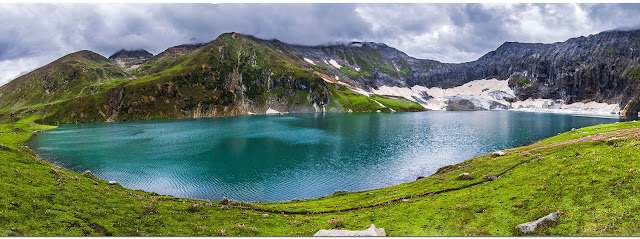
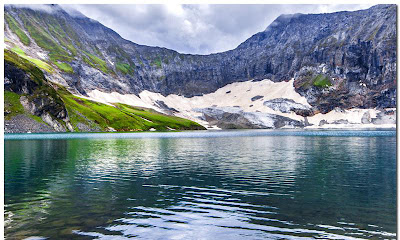
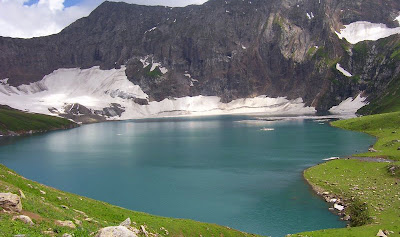
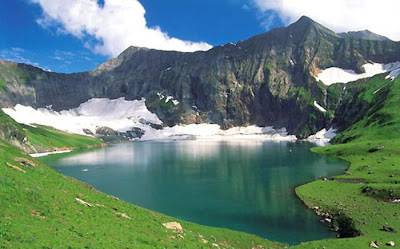
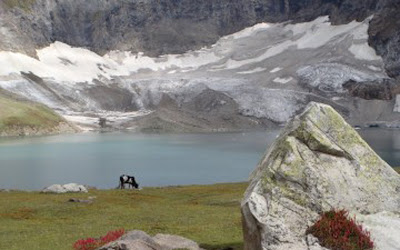








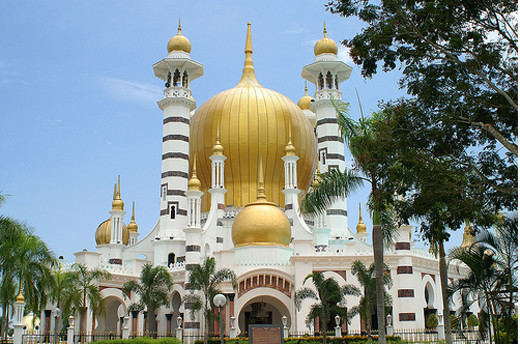






































.jpg)



